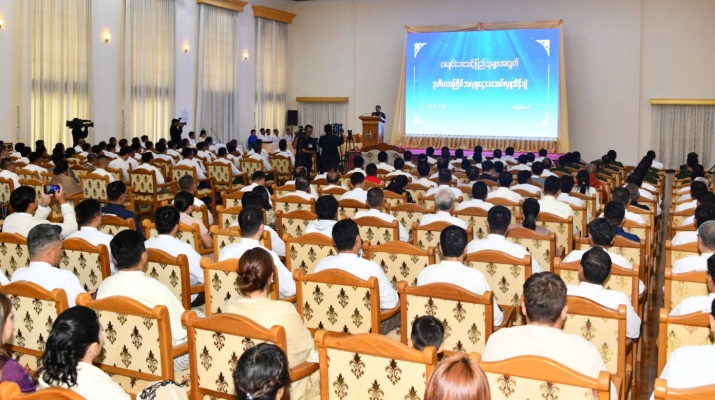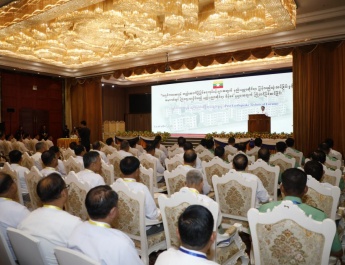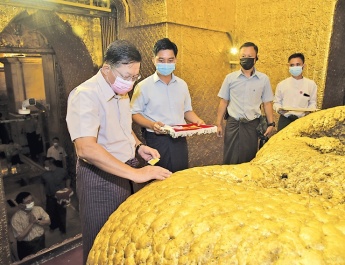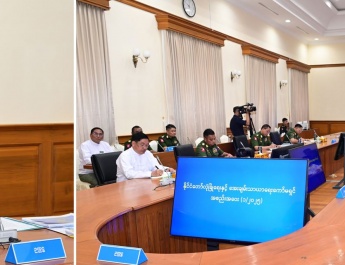NAY PYI TAW May 29
Well-wishers presented donations to provide relief aid and rehabilitation undertakings for Mandalay earthquake victims at the second donation ceremony held at Bayintnaung Yeiktha here this afternoon. Chairman of the State Administration Council Prime Minister Senior General Min Aung Hlaing delivered an address and accepted the donations.
Also present were Chairman of National Disaster Management Committee Vice Chairman of State Administration Council Deputy Prime Minister Vice-Senior General Soe Win, the SAC Joint Secretary, SAC members, union ministers, union level dignitaries, senior military officers from the Office of the Commander-in-Chief, the Nay Pyi Taw Command commander, deputy ministers, local and foreign well-wishers and ministry officials.
A minute silence
The Senior General and party, internal and external donors, and attendees observed a minute silence as an indication of respect for the people who died in the earthquake.
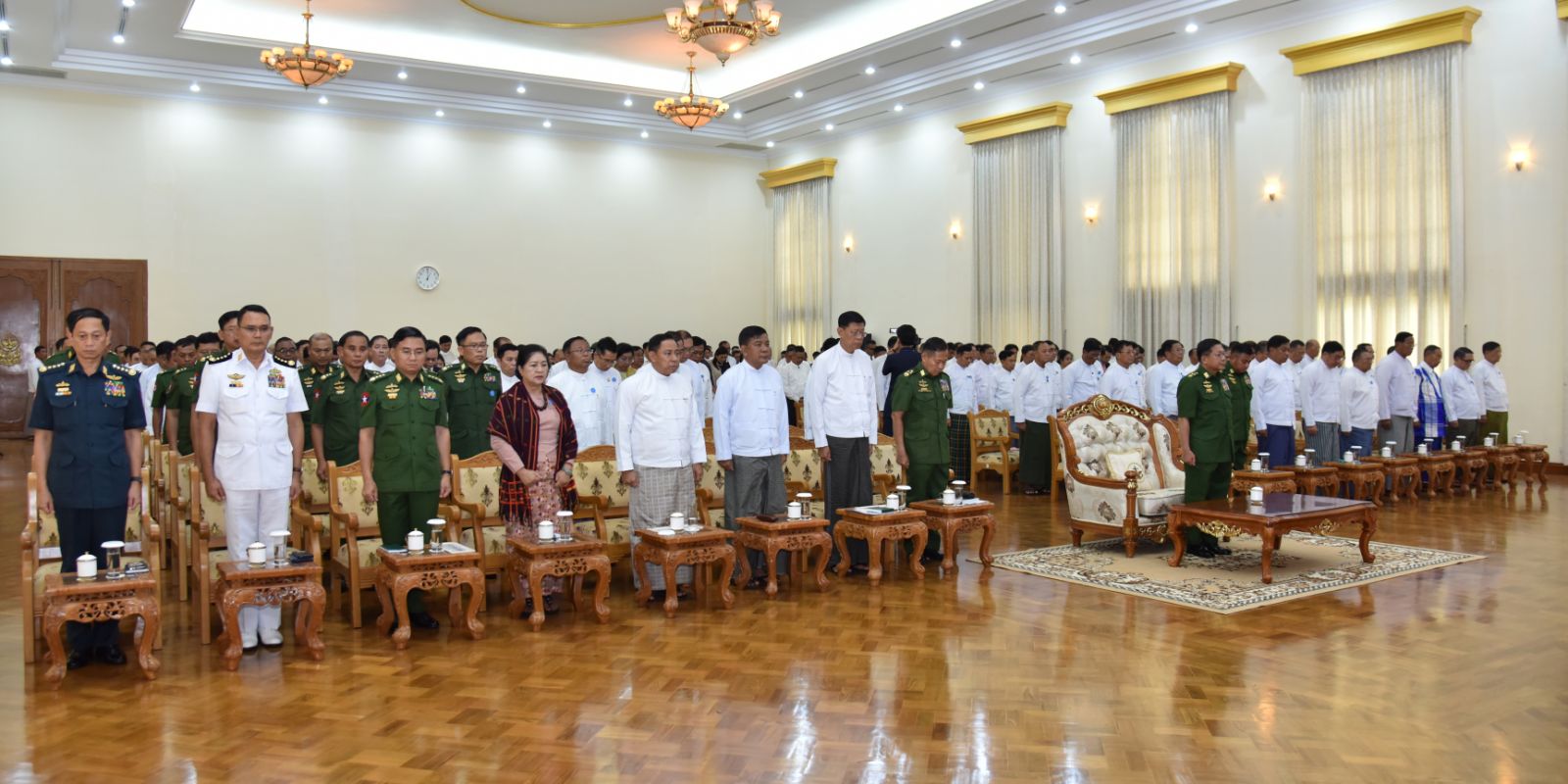
Encounter with natural disasters
In his address, the Senior General said the earthquake jolted on 28 March 2025 affected 10 regions and states including Nay Pyi Taw and the effects were severe in six of them. At this ceremony, well-wishers donate cash contributions for the victims. Hence, it is an auspicious one.
Climate change is bringing floods, cyclones and droughts into the country almost every year. Cyclone Mocha in 2023 and Typhoon Yagi in 2024 also caused downpours and floods in eight regions and states. This year, a 7.7 magnitude earthquake triggered a lot of loss and damage in the nation as well as individuals and families.
Loss and damage caused by Mandalay earthquake
The powerful earthquake hit 374 wards, 944 village-tracts, 2,081 villages, 162,167 house-holds and 506,069 persons in ten regions and states including Nay Pyi Taw Council Area. Moreover, 3,739 died, 5,104 were wounded and 68 were missing.
It also destroyed 51,210 houses, 431 road works, 103 bridges, railroads at 83 places, 11 rail bridges, 6,730 mobile phone centers, ten cable lines of national grid, 3,435 cable towers, 594 irrigation facilities, six dams, 11,338 departmental buildings, 384 hospitals, 364 dispensaries, 166 ancient buildings and museums, 2,409 basic education schools, 72 schools of higher education, 90 private schools, 6469 pagodas, 5,588 monasteries, nunneries and other religious buildings, 344 private industries, 78.5 acres of crops, 133,700 animals, causing a loss of Ks- 3,804.549 billion in current prices.
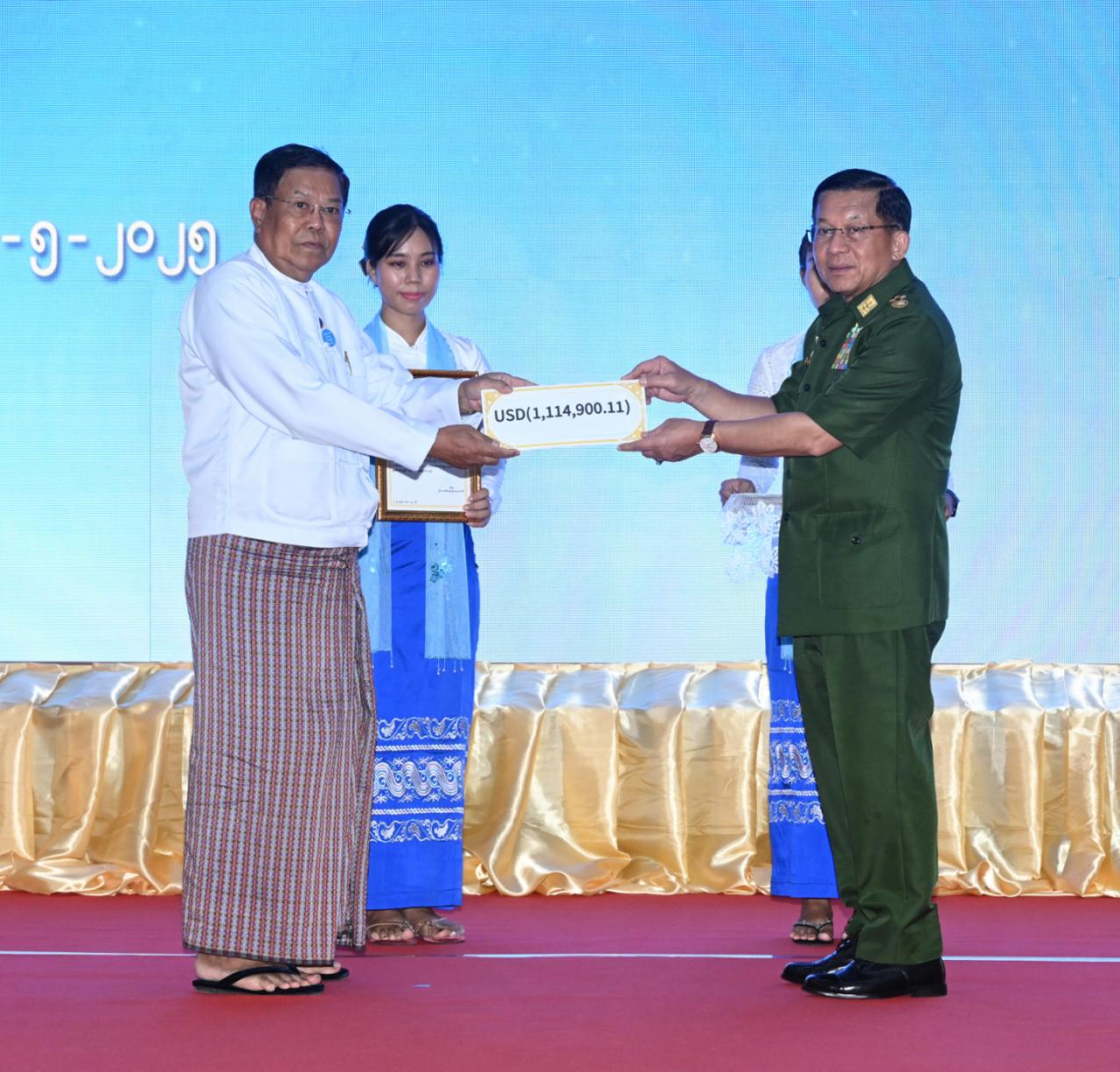
Rescue, Clearance of Debris, and Rehabilitation
After the earthquake on March 28, I personally visited the affected areas and hospitals treating the injured. To date, I have made a total of 15 field visits to earthquake-stricken regions, providing necessary aid and guidance.
Search and rescue operations were carried out in five stages, with full participation from domestic forces. Additionally, we collaborated with international rescue teams to conduct emergency search and rescue missions. Through these efforts, 653 people trapped under rubble were rescued alive, and 806 deceased victims were recovered.
To respond to the earthquake disaster, the Disaster Management Centre (DMC) was established on March 29, 2025, under the National Natural Disaster Management Committee. Task-specific committees systematically carried out response operations, including providing temporary shelters, supplying drinking water, and distributing essential food and consumer goods through mobile markets.
Emergency needs such as communication, electricity restoration, and temporary shelters before the rainy season were also addressed. Temporary health clinics were set up to provide medical care, including necessary treatments and surgeries.
During these response efforts, international humanitarian aid was welcomed. Countries and organizations such as the People’s Republic of China, India, the Russian Federation, AHA Centre, Vietnam, Bangladesh, Thailand, Indonesia, Pakistan, Belarus, Laos, Singapore Red Cross Society, Nepal, UAE, Brunei, and Malaysia donated relief supplies, which were promptly distributed to those in need.
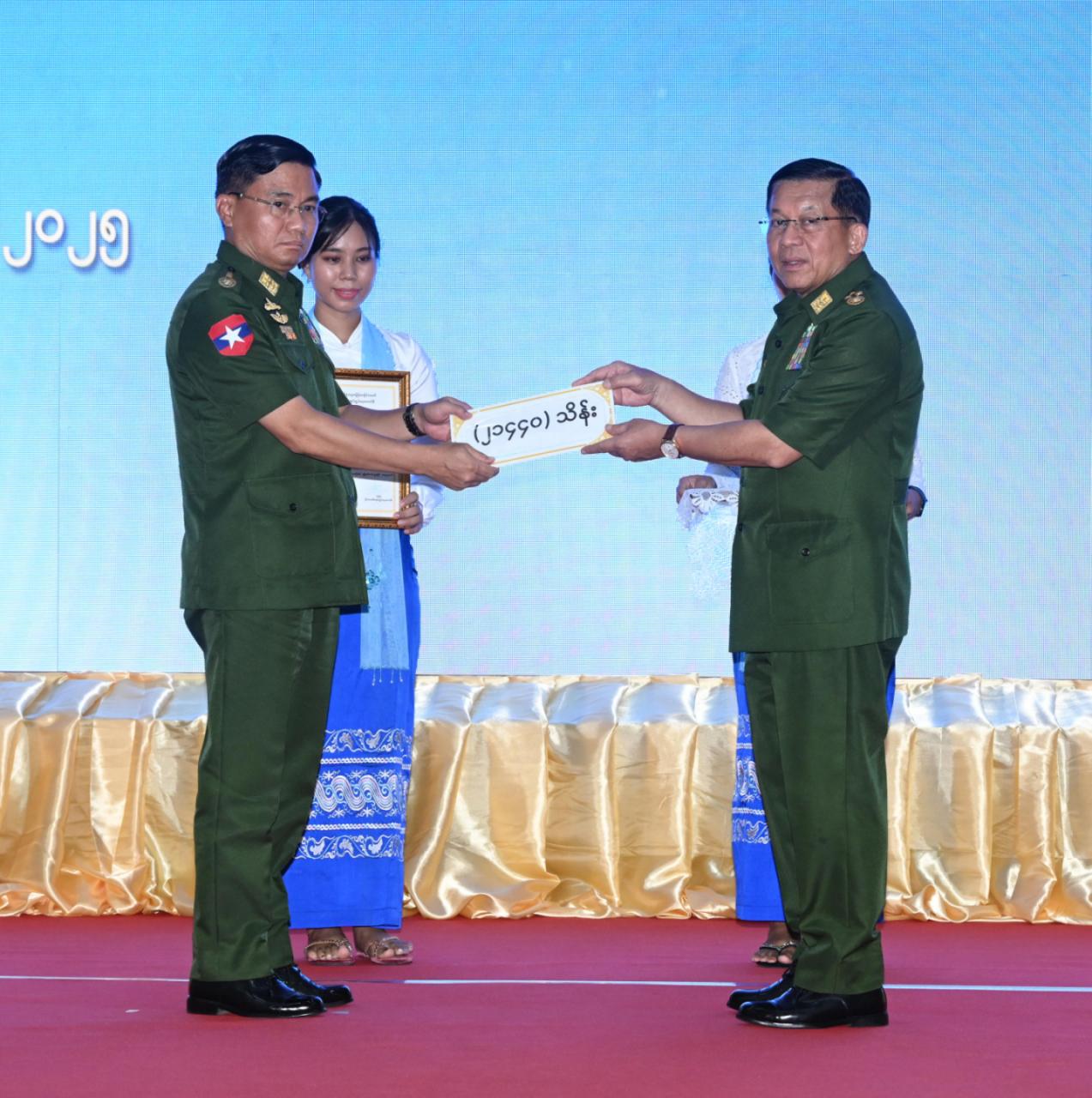
Emergency search and rescue operations have been completed in the regions severely affected by the earthquake. Currently, debris clearance and rehabilitation efforts are being carried out diligently. Given the nationwide emotional impact and the urgent need for stability during reconstruction, the Tatmadaw has declared a temporary ceasefire from April 2 until the end of May. We urge all ethnic armed groups and stakeholders to prioritize national and public interests by adhering to this temporary cessation of hostilities.
In rehabilitation efforts, we must consider not only current hazards but also potential future risks. Reconstruction must meet established standards to ensure long-term resilience. Investing in disaster risk reduction from the outset can reduce recovery costs by up to seven times compared to post-disaster spending. Such investments enhance national resilience and protect economic and developmental gains from natural disasters. Therefore, we emphasize that proactive investment in disaster prevention not only strengthens national resilience but also safeguards economic and developmental progress from being undermined by natural calamities.
Rehabilitation efforts can be carried out effectively and quickly by cooperation The government will exert efforts to rehabilitate things to create better conditions than previous ones by taking short-term and long-term measures to effectively and successfully carry out rehabilitation tasks without leaving anyone behind. As there are limits in the capacity of the government alone to do so, rehabilitation of earthquake-hit areas can be carried out effectively, quickly and successfully only with such cooperation.
At the first ceremony to present cash donations on 1 April, local and foreign well-wishers donated Ks-112.87 billion and relief items worth Ks-12.4 billion, totaling Ks-125.27 billion. The people of Myanmar are greatly sympathetic and helpful to others by taking their troubles as one’s own. Moreover, they are generous in donations.
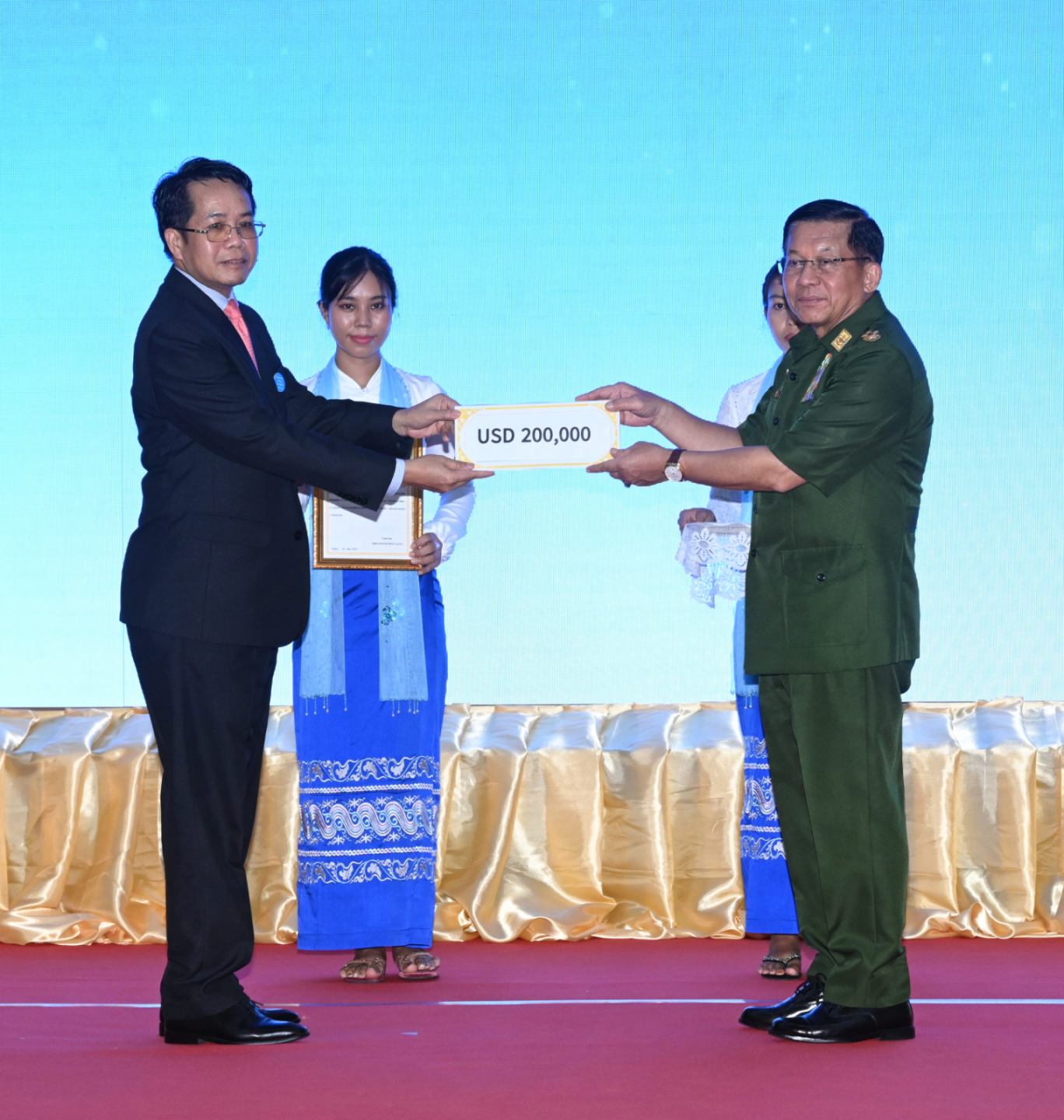
The cooperation of well wishers, donor countries and organizations and individuals, who offered enthusiastic support and donations from inside and outside the country, contributes a lot to efforts of the government, creating friendship and mental strength among earthquake victims. Therefore, the government would like to express thanks to all well-wishers on behalf of the country and earthquake victims.
Then, the Senior General and party, local and foreign well-wishers, donors and participants watched the documentary video “Earthquake rehabilitation and capabilities and the noble reputation of Myanmar citizens.”
Cash donations accepted and certificates of honour presented
Afterwards, union ministries, families of the Tatmadaw (Army, Navy, Air), ambassadors of Laos and Sri Lanka to Myanmar, well-wishers and donors presented cash donations and the Senior General accepted the cash donations and presented certificates of honour to them.
Then, well-wishers, state and region governments, union ministries and organizations continued to present cash donations. Chairman of National Disaster Management Committee, Vice Chairman of the SAC Deputy Prime Minister Vice-Senior General Soe Win, Joint Secretary of the SAC General Ye Win Oo and SAC members accepted the cash donations and presented certificates of honour to well-wishers.
After the ceremony, the Senior General and party cordially greeted the well-wishers and hosted tea for them.
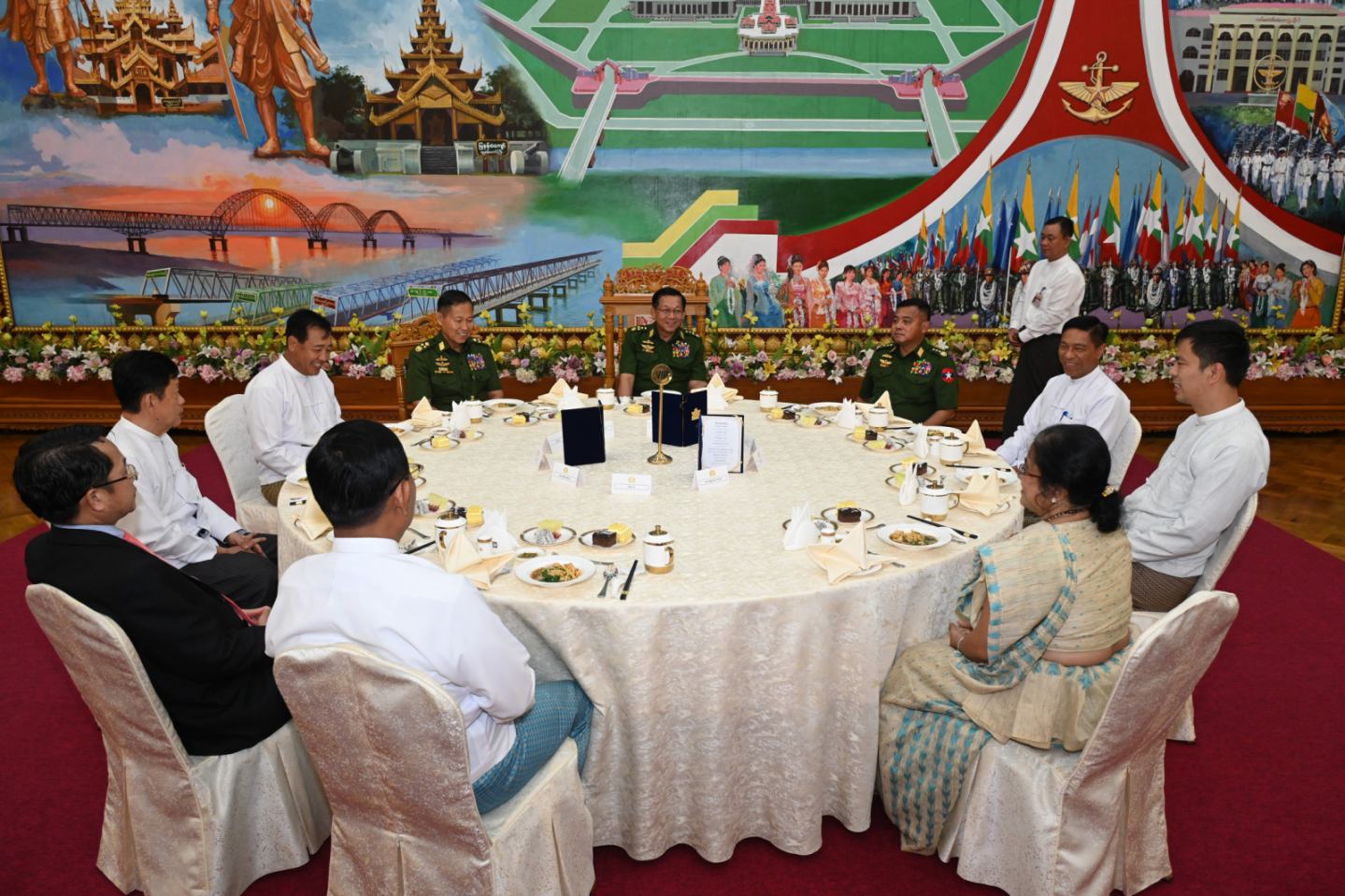
At today’s ceremony to donate cash to support earthquake victims and to carry out rehabilitation tasks, well-wishers at home and abroad donated Ks-131.53 billion and US$-2,314,900 to construct 51 four-unit four-storey buildings comprising 16 apartments and each building will be constructed at a cost of Ks-2 billion.


